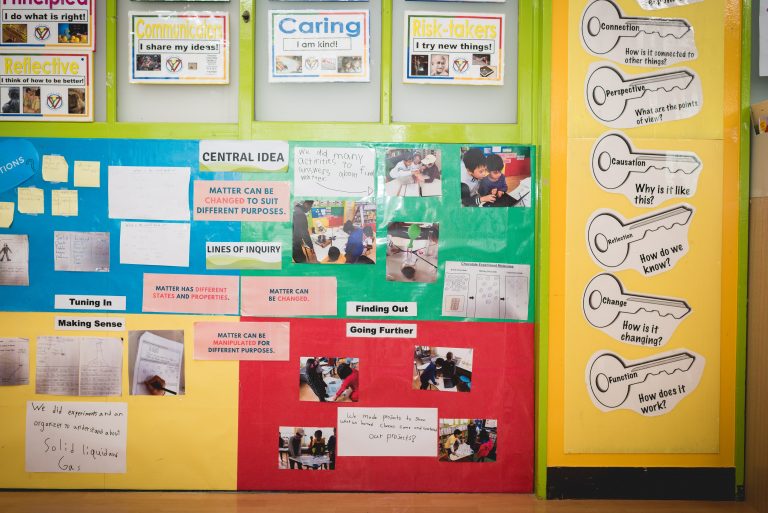Student Work
Inquiry In the Grade 2 Classroom
This is an Inquiry Board for our unit on Matter. The purpose of Inquiry Boards is to provide a scaffold for students as they learn about the inquiry process. Students start by posing questions or problems about a subject, in this case matter. The students then research answers to their questions through activities and experiments. Next, they begin to organize their information and start to think about how they would like to present the knowledge that they have gained. Finally, the students think about a way that they would like to present their knowledge. During this unit, students experimented with different kinds of matter to understand their properties and how they changed. At the end of the unit students made either a poster, book, movie, or slideshow to present their knowledge to the school.
Inquiry boards help to focus the class on finding their own solutions, rather than simply presenting the established facts to the student.

Inquiry Activities
During this experiment, the students were exploring the idea that matter has different states and properties, as well as how matter can change. Students used pop rocks and soda and mixed them together in a graduated cylinder or laboratory flask to see how when the poprocks and soda mix, gas is formed. Before the experiment, students had to record their hypotheses about what would happen. Then after the experiment they wrote whether their predictions were correct or incorrect.



Inquiry Summative Assessment
At the end of our unit on matter, students could choose from a book, movie, poster, or slideshow to demonstrate the learning that they did throughout the unit. First, students completed a graphic organizer on everything they knew about the state of matter that they chose. They then researched to fill in the gaps in their knowledge. They then made a rough draft of their project and submitted it to the teacher for approval. Students then completed their final draft. Finally, other classes from the school were invited to a presentation of the students learning. Students fielded questions and explained their work to the different classes that came to the class. Below you can see examples of the whole process from graphic organizer, to draft, to final draft, and then to the presentation.




Writers Workshop
While studying about matter in science, students were working on procedural writing in Writers Workshop. Many of the experiments that we did during their science lessons, were integrated into our Writers Workshop. Here is an example of the work an EAL student did during our science unit. First, the EAL student wrote our a draft of the hypothesis page, procedures, and result and conclusion. The EAL student then worked with their writing partner to revise and edit the draft.




After the student revised and edited the draft they published it with the corrections they made and wrote as neatly as they could. In my class, we follow the writing process where students first prewrite, draft, revise, edit, then publish. All of our writing undergoes this process so that students learn the importance of planning and constantly working on improving their writing, rather than only doing it once and then submitting it.




Readers Workshop
I always make an effort to integrate as many domains into our unit theme as possible. While we were studying about matter, our Reading Workshop classes focused on reading nonfiction texts. Below you can see some examples of the anchor charts that I used in our lessons to help focus the students attention on features of nonfiction books.



During our Reading Workshop classes, students also focus on understanding the different skills associated with reading. Rather than having students passively read most of the class, students are engaged in discussion with reading partners and filling out graphic organizers. Here are some examples of student work when studying nonfiction texts.


Inquiry Math
In our math class, we don’t focus on doing math books and endless math worksheets. We learn math through inquiry and action. Students are regularly asked to think of questions they have of how math works and put them to the test to see if they can get to the reasons math is the way it is. During our unit on matter, students took concepts from science about mass and weight and explored them in the math class. In the pictures below, students learned about the principles of measuring weight and different units of weight.


Menu
Copyright © 2021 Shanemarsan.com